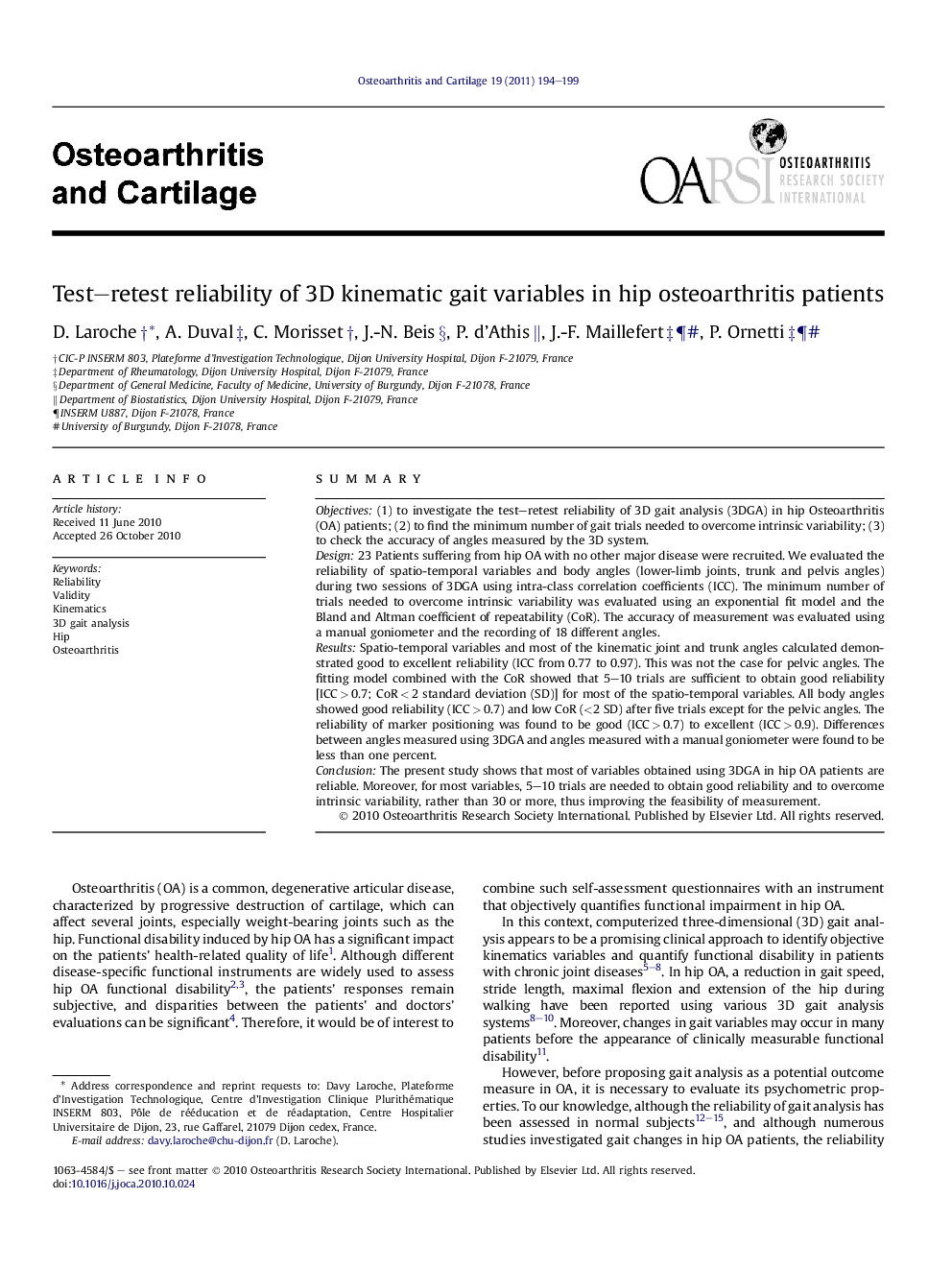| Article ID | Journal | Published Year | Pages | File Type |
|---|---|---|---|---|
| 3380235 | Osteoarthritis and Cartilage | 2011 | 6 Pages |
SummaryObjectives(1) to investigate the test–retest reliability of 3D gait analysis (3DGA) in hip Osteoarthritis (OA) patients; (2) to find the minimum number of gait trials needed to overcome intrinsic variability; (3) to check the accuracy of angles measured by the 3D system.Design23 Patients suffering from hip OA with no other major disease were recruited. We evaluated the reliability of spatio-temporal variables and body angles (lower-limb joints, trunk and pelvis angles) during two sessions of 3DGA using intra-class correlation coefficients (ICC). The minimum number of trials needed to overcome intrinsic variability was evaluated using an exponential fit model and the Bland and Altman coefficient of repeatability (CoR). The accuracy of measurement was evaluated using a manual goniometer and the recording of 18 different angles.ResultsSpatio-temporal variables and most of the kinematic joint and trunk angles calculated demonstrated good to excellent reliability (ICC from 0.77 to 0.97). This was not the case for pelvic angles. The fitting model combined with the CoR showed that 5–10 trials are sufficient to obtain good reliability [ICC > 0.7; CoR < 2 standard deviation (SD)] for most of the spatio-temporal variables. All body angles showed good reliability (ICC > 0.7) and low CoR (<2 SD) after five trials except for the pelvic angles. The reliability of marker positioning was found to be good (ICC > 0.7) to excellent (ICC > 0.9). Differences between angles measured using 3DGA and angles measured with a manual goniometer were found to be less than one percent.ConclusionThe present study shows that most of variables obtained using 3DGA in hip OA patients are reliable. Moreover, for most variables, 5–10 trials are needed to obtain good reliability and to overcome intrinsic variability, rather than 30 or more, thus improving the feasibility of measurement.
